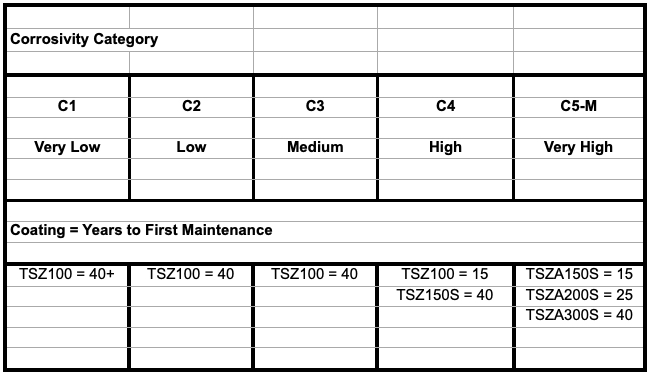This section is a guide to anti corrosion coatings for long term protection of steel structures. Many aspects have been omitted in order to keep it brief.
Specifiers and Contractors should always refer to the relevant Standards for more detail or contact us for our assistance.
Recent surveys showed 80% of coating failures were due to incorrect or inappropriate specification with the balance due to incorrect application.

